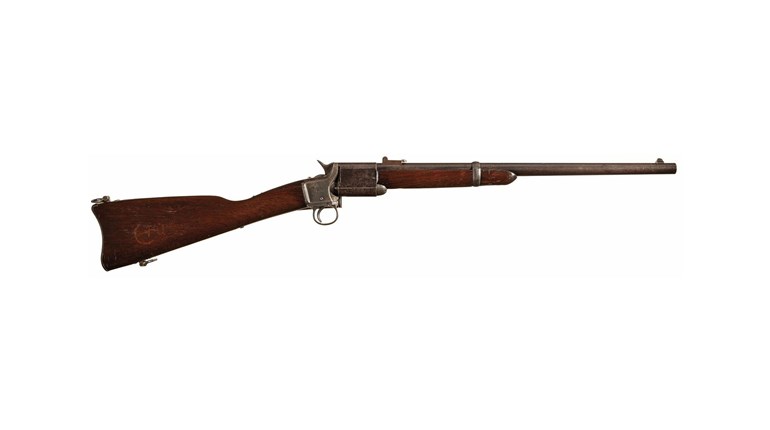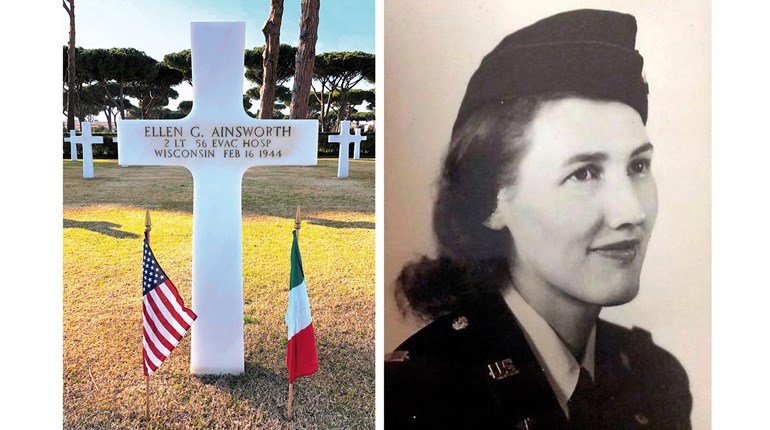

On Wednesday, Sept. 18, 1861, the iron-hulled screw steamer Bermuda reached Savannah and delivered a million-dollar cargo. The ship had departed England 28 days prior carrying war matériel for the Confederate States of America and, after running the Union naval blockade off of Tybee Roads, it was now safely in a Confederate port. Among the entries on Bermuda’s cargo manifest was a consignment of 3,500 Pattern 1853 Enfield rifle-muskets, most of which had been produced by the London firm of John Edward Barnett & Sons. When these rifles reached Georgia, it represented the first delivery of commercial-export Enfields to slip through the blockade and make it to the Confederacy during the Civil War. Many thousands more would follow.
The Pattern 1853 Enfield rifles that arrived on Bermuda did so as a result of the efforts of Caleb Huse—the CSA’s official arms-procurement agent and purchasing specialist in Europe. Born in Massachusetts in 1831, Huse graduated from the U.S. Military Academy at West Point in 1851, subsequently began teaching there, and continued to do so for several years thereafter. In September, 1860, he went to work for the University of Alabama as Superintendent, Commandant of Cadets and Professor of Chemistry.
Although born in the North, Huse created connections in Tuscaloosa that pulled him toward the Southern cause. When offered a direct commission in the Confederate Army at the rank of Major during the secession crisis, he accepted on the same day as the bombardment of Fort Sumter—April 12, 1861. Shortly thereafter, Huse proceeded to New York City, then on to Portland, ME, and from there departed North America for the United Kingdom. When he arrived in Liverpool on May 10, 1861, his first mission was to purchase 12,000 rifles and a battery of eight artillery pieces, so he began calling on several manufacturing interests that could deliver the goods.
The reason Huse turned to England first was because the various firearm manufacturing interests there enjoyed something that, for example, the Belgian gunmakers in and around Liège did not: a reputation for the highest quality. And with the 3rd Model of the Pattern 1853 Enfield, the English had a battle-proven design that was universally recognized as being the finest rifle musket available in Europe. Weighing in at 9.5 pounds, the 55-inch long “three-band” Enfield that Huse began buying for Southern fighting forces in 1861 featured percussion ignition, a 39-inch barrel with three-groove rifling and a ladder-adjustable rear sight graduated to 1,000 yards. Best yet, it could accelerate a smooth-sided 530-grain, expanding-lead bullet to a muzzle velocity of just over 900 fps with the kind of superlative accuracy that was beginning to redefine land warfare. These features made the P-53 the battlefield equal of the U.S. government’s standard-issue service rifle, the venerable Model 1861 Springfield, and made Southern riflemen every bit as dangerous as their Northern opponents.

In London, MAJ Huse attempted to buy up all of the guns he could by outbidding Northern counterparts who had been sent over by the U.S. to obstruct the sale of arms and ammunition to the CSA. But, Huse was given wide latitude to get his job done: he reported directly to the Confederate Secretary of War and could reach financial decisions without consulting higher authority. With that broad flexibility, he was able to secure production of the “three-band” Pattern 1853 Enfield rifle-muskets at John Edward Barnett & Sons, the London Armoury Company at Bermondsey, the Royal Small Arms Factory at Enfield and other firearm manufacturers in the London area, as well as at producing interests in the Birmingham area.
Before the end of the conflict in 1865, more than 300,000 “three-band” Pattern 1853 Enfield rifle-muskets served the Confederacy in almost every engagement in all theaters. In this way, a relatively obscure Northern-born former U.S. Army officer and college professor turned Confederate purchasing agent left a deep mark on the War Between the States.





































